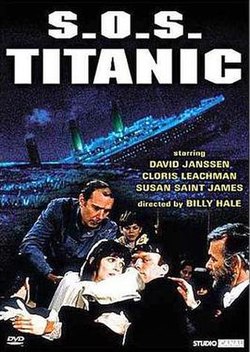| S.O.S. Titanic | |
|---|---|
 StudioCanal DVD cover | |
| Genre | Drama History |
| Written by | James Costigan |
| Directed by | William Hale |
| Starring | David Janssen Cloris Leachman Susan Saint James David Warner Ian Holm Helen Mirren Harry Andrews Beverly Ross |
| Music by | Howard Blake |
| Country of origin | United States/ United Kingdom |
| Original language | English |
| Production | |
| Executive producer | Roger Gimbel |
| Producer | Lou Morheim |
| Production locations | RMS Queen Mary - 1126 Queens Highway, Long Beach, California Shepperton Studios, Shepperton, Surrey, England The Waldorf Hotel, Aldwych, Strand, London, England |
| Cinematography | Christopher Challis |
| Editor | Rusty Coppleman |
| Running time | Unedited U.S. TV version 144 min. Edited European theatrical version 103 min. |
| Production company | EMI Films |
| Budget | $5 million [1] 1979 $dollars |
| Original release | |
| Network | ABC |
| Release | September 23, 1979 |
S.O.S. Titanic is a 1979 drama disaster television movie that depicts the doomed 1912 maiden voyage from the perspective of three distinct groups of passengers in first, second and third class. The script was written by James Costigan and directed by William Hale (credited as Billy Hale). It is the first Titanic film to be filmed and released in colour.
